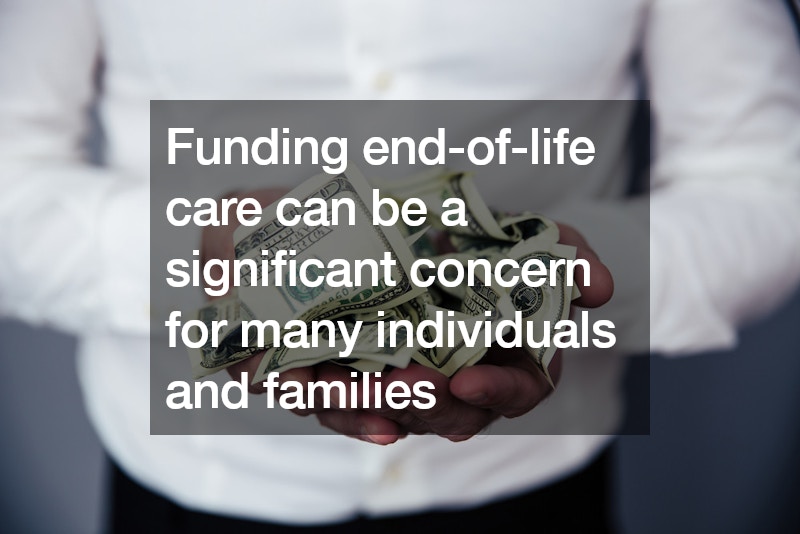End of life care is a complex and multifaceted aspect of healthcare that encompasses a wide range of services aimed at providing comfort, support, and dignity to individuals nearing the end of their lives. In this comprehensive guide, we will explore the different types of end of life care, including palliative care and hospice care, as well as the various settings in which such care is provided. Additionally, we will discuss how end of life care is funded and offer practical advice for individuals and families navigating this challenging journey.
What is end of life care, and why is it important? End of life care is a holistic approach to supporting individuals with advanced illnesses or terminal conditions, focusing on alleviating symptoms, managing pain, and enhancing quality of life during the final stages of life. It encompasses medical, emotional, spiritual, and practical support for both patients and their families, aiming to promote dignity, comfort, and peace of mind during this sensitive time.
Distinguishing between palliative care and hospice care is crucial for understanding the options available to individuals nearing the end of life. Palliative care is a specialized form of medical care focused on relieving symptoms and improving the quality of life for patients with serious illnesses, regardless of their prognosis. Unlike hospice care, which is typically reserved for individuals with a prognosis of six months or less to live, palliative care can be provided at any stage of illness and can be administered alongside curative treatments.
Hospice care, on the other hand, is specifically designed for individuals with a terminal prognosis and focuses on providing comfort and support rather than curative treatments. Hospice care is provided by a multidisciplinary team of healthcare professionals, including doctors, nurses, social workers, chaplains, and volunteers, who work together to address the physical, emotional, and spiritual needs of patients and their families. Hospice care can be provided in various settings, including the home, hospice centers, nursing homes, and hospitals, depending on the individual’s preferences and circumstances.
Understanding where end of life care can be provided is essential for individuals and families facing difficult decisions about care options. In addition to hospice care, end of life care can be delivered in various settings, including the home, hospitals, nursing homes, and palliative care clinics. The choice of setting often depends on factors such as the individual’s medical needs, personal preferences, and available support systems. Many individuals express a preference for receiving end of life care in the comfort and familiarity of their own homes, surrounded by loved ones and familiar surroundings. However, for some individuals, hospital or hospice settings may be more appropriate, especially if they require specialized medical attention or round-the-clock care.
Funding end of life care can be a significant concern for many individuals and families, especially considering the high cost of medical treatments and supportive services. Fortunately, several options are available to help cover the expenses associated with end of life care. Government health insurance programs, such as Medicare and Medicaid, often provide coverage for hospice and palliative care services, including medications, medical equipment, and nursing care. Private health insurance plans may also offer coverage for end of life care, although coverage options and benefits may vary depending on the individual’s policy and provider.
In addition to government and private insurance options, individuals may choose to purchase long-term care insurance to help cover the costs of end of life care. Long-term care insurance policies typically provide coverage for a range of services, including in-home care, nursing home care, and hospice care, allowing individuals to plan for their future care needs and protect their assets from the high costs of long-term care. However, it’s essential for individuals to carefully review their insurance policies and understand the terms, conditions, and limitations of coverage to ensure that their end of life care needs are adequately met.
In addition to understanding the various types of end of life care and funding options available, it’s crucial for individuals and families to plan and prepare for the end of life proactively. This may involve having conversations with loved ones about their wishes and preferences for end of life care, completing advance directives and living wills, and appointing a healthcare proxy or power of attorney to make medical decisions on their behalf if they become incapacitated. By taking these proactive steps, individuals and families can ensure that their wishes are honored and that they receive the care and support they desire at the end of life.
In summary, end of life care is a vital aspect of healthcare that encompasses a wide range of services aimed at providing comfort, support, and dignity to individuals nearing the end of their lives. Understanding the different types of end of life care, including palliative care and hospice care, as well as the various settings in which such care is provided, is essential for individuals and families facing difficult decisions about care options. By exploring funding options, planning proactively, and having open and honest conversations about end of life preferences, individuals and families can ensure that their wishes are honored and that they receive the care and support they need during this challenging time.

